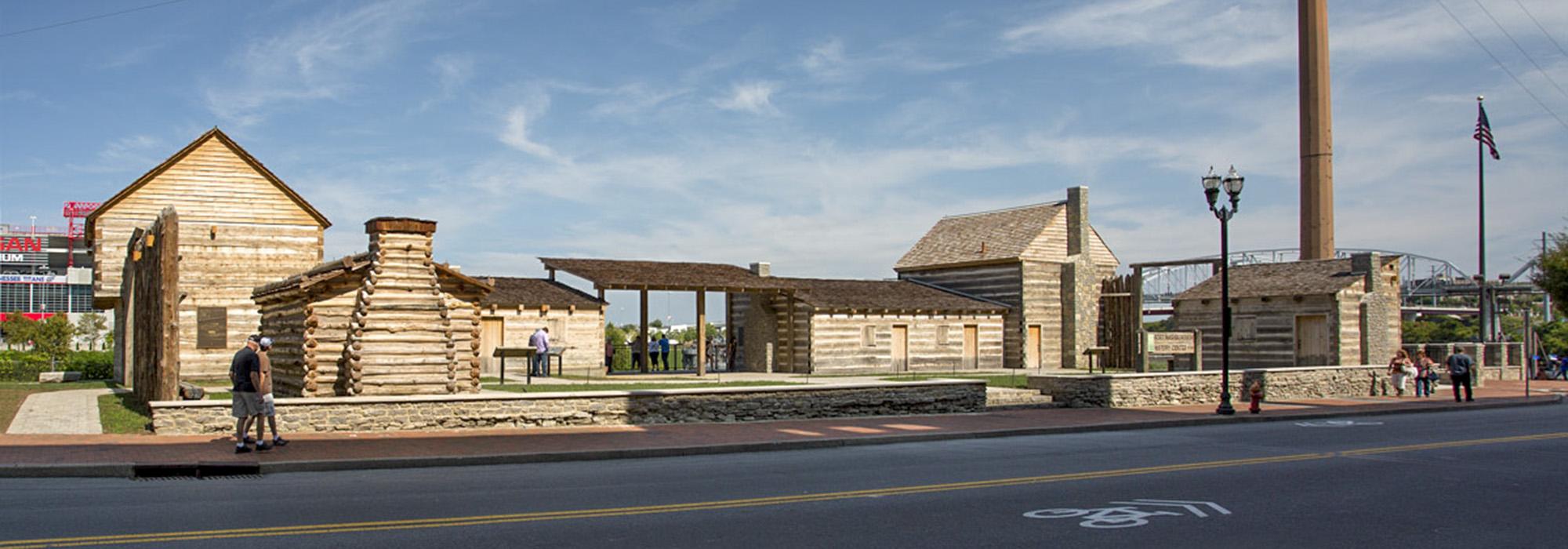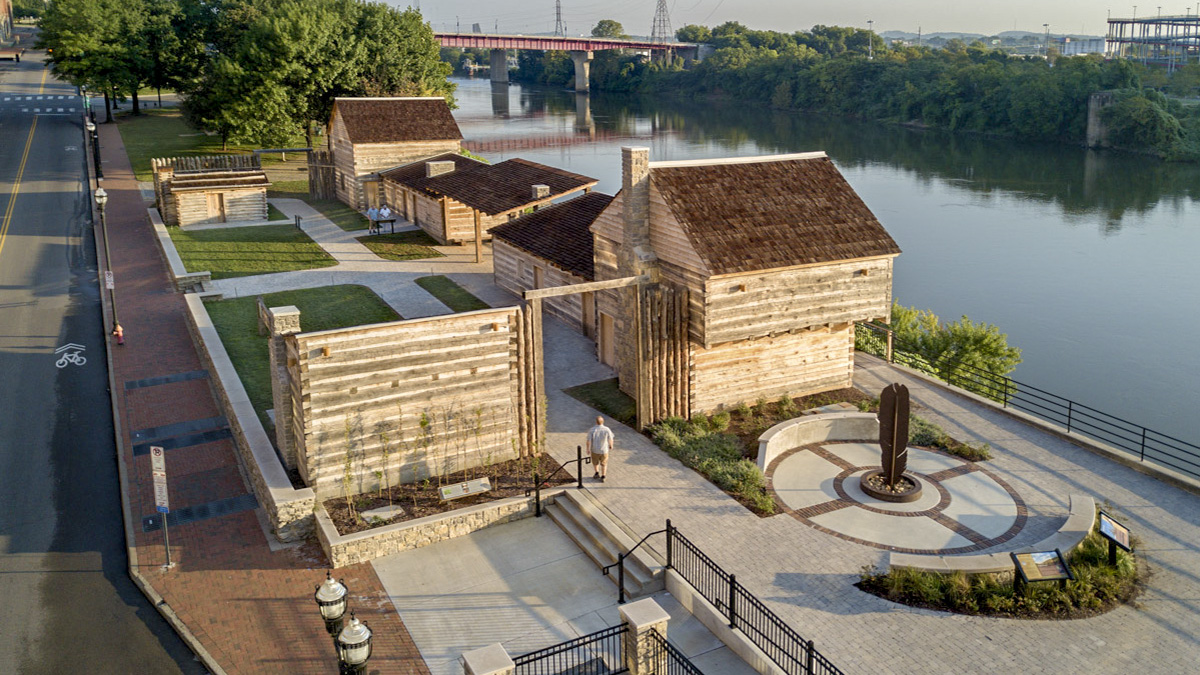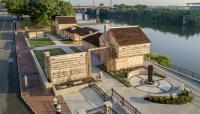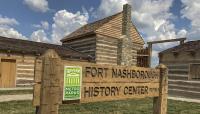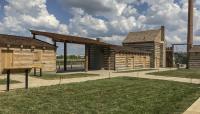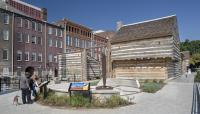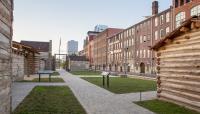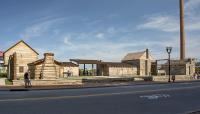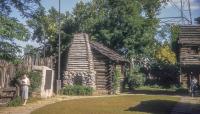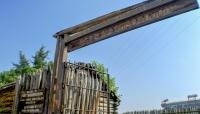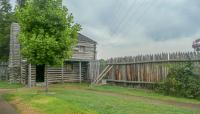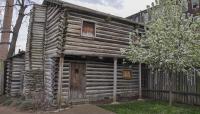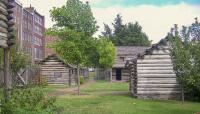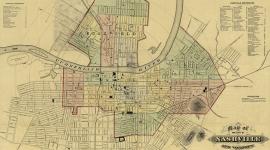Originally called Bluff Station, this fort was established in 1779 on a bluff overlooking the Cumberland River (also named Wasioto, or Riveriere de Chaounons by French traders) by settlers arriving from the distant Watauga camp. Once part of Cherokee and Chickasaw territories, the area had long been a nexus of hunting and trade. A nearby spring made the location desirable, as did a salt lick, near the site of Nashville’s present-day Public Square, which attracted game. Timber from the surrounding dense woods was used to build a stockade comprising a two-story structure surrounded by log cabins. Although details of the fort’s design remain in dispute, an early sketch depicts a rectangular structure, 247 by 123 feet, with one entry gate and an accompanying sentry post, and with two-story block houses on each corner. The incursion of the settlers and the construction of the fort were resisted by Cherokee leader Dragging Canoe, resulting in violent clashes. As the threat of violence receded by the 1790s, this fort, along with others in the area, became redundant.
Funded by local donations and by the Daughters of the American Revolution, a replica of the fort was built in the 1930s but decayed over the next three decades. In 1962 the City of Nashville reconstructed the site, which was listed in the National Register of Historic Places in 2011. Following the destruction of the second replica in 2015, the site was removed from the Register. A new interpretive center opened on the site in 2017. This third replica is an open-air design, with six log structures set back from First Avenue on a north-south axis, with a plaza and sculpture at the southern end.



